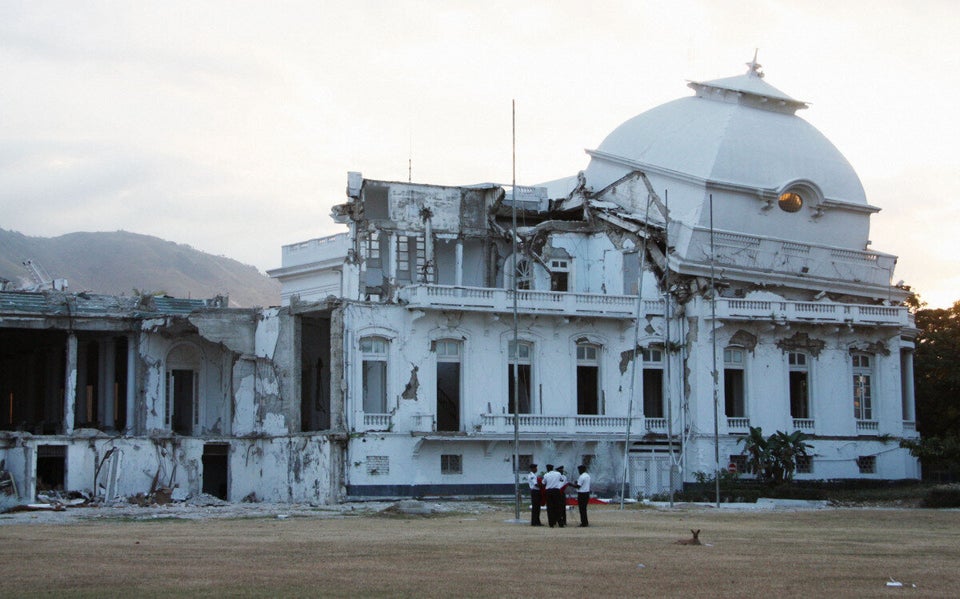
You may not know this, but beyond my role as president and CEO of CARE Canada I'm a bit of a hockey fan. I began playing recreational hockey a few years ago when my three kids started and was happy to see NHL players hit the ice again.
So, when I heard the country's leading hockey mouthpiece Don Cherry criticizing aid to Haiti, I must say, I felt kind of like my worlds were colliding.
The Coach's Corner star took to Twitter in early January to question how Canada could spend so much money on the earthquake-ravaged nation.
"Maybe it's just me. But Canada gave Haiti 49.5 million dollars last year. Are we nuts?" he wrote.
For more than two decades, the first week of February has been dubbed International Development Week.
It's a time when we're meant to reflect on what Canada is doing to help others around the world.
While Cherry's comments provoked much gnashing of teeth in the international development community, he does raise a pretty pertinent question: What is the value of Canada's contribution to international aid and development?
As someone who works in this field, my opinion is obviously quite biased. I've seen first-hand dramatic results throughout my more than 20 years at CARE Canada. While the Canadian International Development Agency (CIDA) seems to receive a lot of negative flack in the media, looking back on my career, CIDA has done a lot of good, which often gets ignored.
Regardless, the question of Canada's return on investment bubbles up every time we talk about international aid.
Part of the problem is the issue of false expectations. After a disaster such as the 2010 Haiti earthquake, organizations scramble to raise essential funds to help rebuild shattered infrastructure, supply clean water and food, and offer immediate, life-saving emergency assistance.
In our effort to meet these needs and raise awareness, celebrities, governments and organizations may inadvertently give the impression that a country devastated by a major disaster can be rebuilt in a few short years.
However, raising false expectations only breeds disillusionment in international aid, which harms our efforts to raise critical emergency funds the next time tragedy strikes. After all, a lot can happen to sideswipe development.
Returning to the Haiti example, the reconstruction effort has met no shortage of challenges. A cholera outbreak in October 2010 spread throughout the country, resulting in more than 490,000 cases and over 6,700 deaths.
The disaster-prone country has also suffered through no less than three hurricanes since the 2010 earthquake. The most recent, Hurricane Sandy, destroyed 42 per cent of Haiti's corn, 30 per cent of its rice and 20 per cent of its bean crop.
A recent column in the Hill Times noted that "Development is not a career for the impatient." A pretty accurate summation I would agree.
My colleagues and I who work in this field are routinely humbled by the sheer magnitude of what it is we're trying to accomplish. Organizations with years of experience in international development like CARE have learned to think the long game, not the short.
Indeed, there are wins along the way, but there are also losses. Nevertheless, development professionals have a stubborn persistence to fight through the losing streaks to accomplish their goal.
That's why, for example, there has been a 47 per cent drop in the number of women worldwide who died from complications in childbirth in the last two decades. Or a 41 per cent drop in the mortality rate of children under five in the same period.
In Haiti, the mortality rate for children under five fell from 143 deaths per 1,000 live births in 1990 down to 70 in 2010. Canada, in comparison, is just six deaths.
Progress, but there still remains a lot to be done. It's important we constantly assess our efforts along the way to continuously learn and improve.
You dig deep, quietly grind your way forward and, eventually, hoist the cup above your head.
Then you get back to work and look to do it again.
Kevin McCort is President and CEO of CARE Canada
